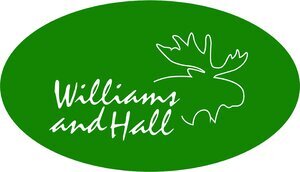Shelter in Peace in the BWCA
Lately, in our All Things Boundary Waters Blog, we have been focused on the Coronavirus Pandemic. We have written about cleaning protocols, as well as how the Boundary Waters can provide a little sanctuary from the virus and other issues challenging us in our daily lives. Today, we will focus on how the BWCA is able to provide such sanctuary.
The BWCA is a Crown Jewel
The Boundary Waters Canoe Area wilderness is one of America’s crown jewels. With over 1,000,000 acres and 1,200 miles of canoe routes, the BWCAW is about the size of the state of Delaware. But more significantly, the BWCA is full of boundless beauty and wildlife.
The Boundary Water is managed by the U.S. Forest Service. And, because of its designation as a U.S. Wilderness Area pursuant to the Wilderness Act of 1964, there are a set of rules and regulations that govern the BWCA. It is through these rules and Leave No Trace philosophy that quiet and solitude reign supreme. Here are some of the key rules.
Key Rules That Provide For Sheltering in Peace
Group size is limited to no more than 9 people using no more than 4 watercraft. This rule prevents large groups from gathering in one place at any one time.
Quota-based entry permits limit the number of groups entering any one entry point on any given day. This limits the number of groups within various geographic areas of the BWCA.
Camping is only allowed in designated, improved BWCA campsites. Each campsite has a latrine and fire grate. Using designated campsites prevents destruction of the high-use areas of the wilderness. In addition, these designated campsites are generally far enough apart to prevent noise from travelling from one site to another, helping to insure privacy and solitude.
With a few exceptions, no motorized vehicles or watercraft are allowed in the Boundary Waters. There a few hiking trails and, of course, portages between lakes. Paddlers in canoes and occasional kayaks dominate the routes through the BWCA.
Paddlers can bring dogs into the wilderness area, but dogs must be under control at all times so as not to disturb other paddlers or the wildlife.
A relatively new rule prohibits drones from operating within the Boundary Waters.
A Peaceful Setting in the BWCA
These rules are designed to enhance the experience of all travelling through the BWCA. Embrace these rules and you can shelter in peace in the Boundary Waters this summer.
Paddle On. Be Free.
Kevin

